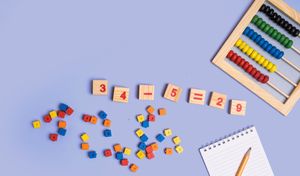Identifying a statistical question requires familiarity with statistics. Statistics is a mathematical study that involves collecting, analyzing, and interpreting data that changes.
So a statistical question will ask a question in which the answer can change; data must be collected and analyzed, and the answer offers an explanation of the information.
How to recognize a statistical question?
- A question is not a statistical question if it has an exact answer. For example “How old are you?”
- A question is a statistical question if the answer is a percent, range, or average. For example “How old are the students in this room”
A statistical question is a question that has many different, or variable, answers. An example is "How much does a typical cat weigh?" Begin the activities below to practice identifying statistical questions.

Examples of Statistical Questions
- On average, how old are the dogs that live on this street?
- What proportion of the students at your school like watermelons?
- What time did the students in this class get up this morning?
- How many votes did the winning candidate for the Presidents of the Student Body receive in each of the past 20 years?
- What were the high temperatures in all of the Latin American capitals today?
Examples of Non-Statistical Questions
- What time did I get up this morning?
- How many votes did the winning candidate for the Student Body receive this year?
- What was the high temperature in Mexico City today?
We often collect data to answer questions about something. The data we collect may show variability, which means the data values are not all the same.
Some data sets have more variability than others.
Here are two sets of figures:
Set A has more figures with the same shape, color, or size. Set B shows more figures with different shapes, colors, or sizes, so set B has greater variability than set A.
Both numerical and categorical data can show variability. Numerical sets can contain different numbers, and categorical sets can contain different categories or types.
When a question can only be answered by using data and we expect that data to have variability, we call it a statistical question.

Here are some examples:
- Who is the most popular musical artist at your school?
- When do students in your class typically eat dinner?
- Which classroom in your school has the most books?
To answer the question about books, we may need to count all of the books in each classroom of a school. The data we collect would likely show variability because we would expect each classroom to have a different number of books.
In contrast, the question “How many books are in your classroom?” is not a statistical question. If we collect data to answer the question (for example, by asking everyone in the class to count books), the data can be expected to show the same value.
Likewise, if we ask all of the students at a school where they go to school, that question is not a statistical question because the responses will all be the same.






